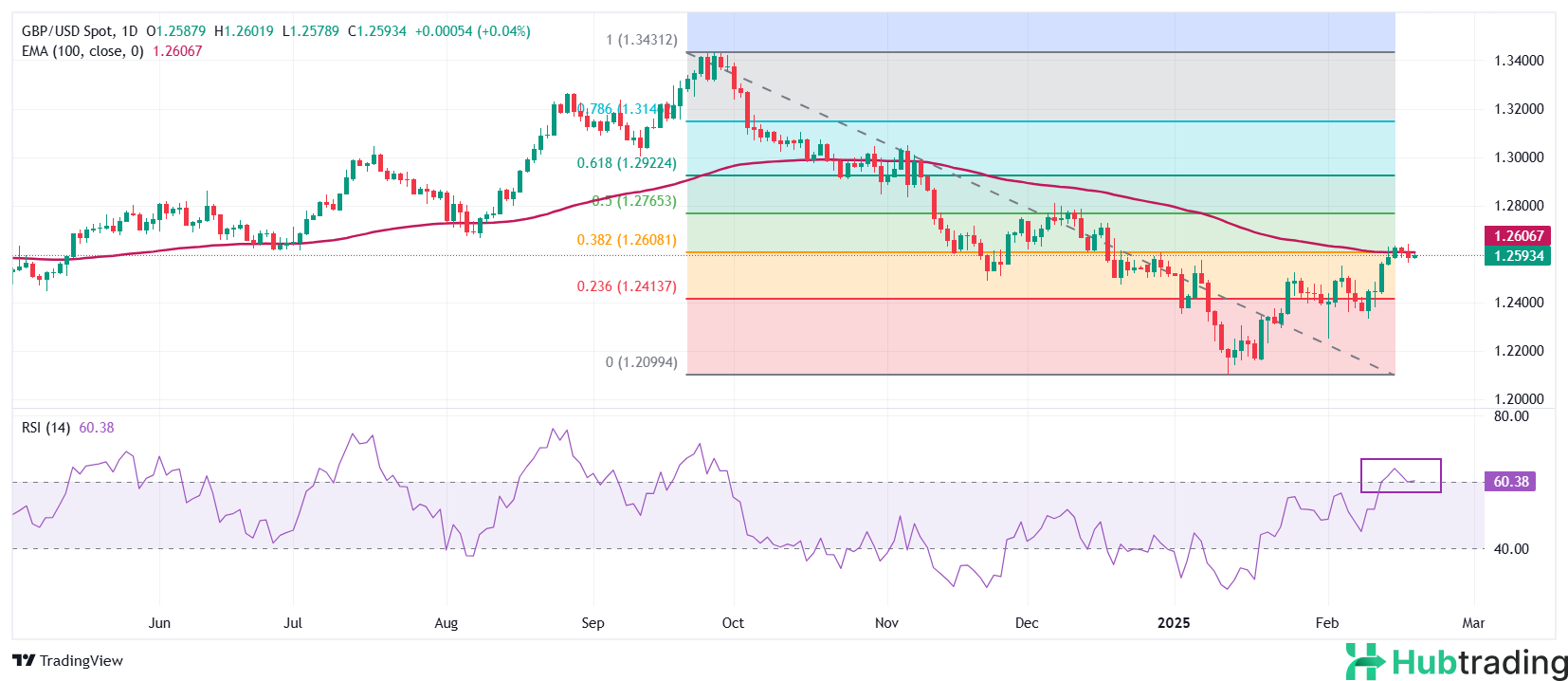- The Pound Sterling hovers around 1.2615 against the US Dollar as investors await updates on President Trump’s international policies.
- Wednesday’s FOMC minutes revealed officials' concerns over rising inflation risks.
- Investors look ahead to UK Retail Sales for January and preliminary S&P Global UK/US PMI data for February, set for release on Friday.
The Pound Sterling (GBP) edges higher, trading slightly above 1.2600 against the US Dollar (USD) in Thursday’s European session. The pair benefits from improved market sentiment, as investors grow more confident that US President Donald Trump’s tariff policies may not be as severe as initially feared.
On Wednesday, Trump signaled that a trade deal with China remains possible, despite imposing 10% tariffs on all Chinese imports earlier this month. Additionally, he announced plans to levy 25% tariffs on foreign cars, pharmaceuticals, and semiconductors. However, details on these tariff measures remain unclear, leaving markets uncertain about their potential impact.
Market sentiment has also improved due to growing optimism over a potential Russia-Ukraine peace agreement. Trump confirmed plans for further discussions with Russian diplomats in Saudi Arabia, though Ukraine has rejected any deal made without its direct involvement.
Despite improving market risk appetite, the US Dollar remains strong due to monetary policy expectations. The FOMC minutes from January’s meeting, released Wednesday, indicated that officials are likely to maintain interest rates at 4.25%-4.50% for an extended period.
Fed policymakers expressed concerns over inflationary risks, particularly due to Trump’s potential tariff measures, which could lead to higher input costs being passed on to consumers. While tariffs may boost domestic production, the higher labor costs in the U.S. could make these goods less competitive globally, fueling inflationary pressures. As a result, the Fed may delay further monetary easing, which initially began in September 2024.
Key Market Movers for the Pound Sterling
- The Pound Sterling remains mixed against major currencies, as concerns over the UK’s economic outlook persist. BoE Governor Andrew Bailey recently warned of sluggish economic growth and a weakening labor market.
- GBP attempted to gain strength following a hotter-than-expected UK Consumer Price Index (CPI) report for January, but the momentum faded. Bailey had already cautioned that inflation might rise in the short term due to volatile energy prices, though the increase is unlikely to be sustained.
- The year-on-year headline CPI rose 3%, exceeding expectations of 2.8% and December’s 2.5%. Meanwhile, core CPI—which excludes food, energy, alcohol, and tobacco—grew by 3.7%, aligning with forecasts but accelerating from the previous 3.2% reading.
- While the inflation spike is expected to be temporary, it reduces the likelihood of further monetary easing by the Bank of England (BoE). Earlier this month, the BoE cut interest rates by 25 basis points (bps) to 4.5%, but signaled a cautious approach to future rate cuts.
- Investors are now focused on upcoming UK Retail Sales data for January and the flash S&P Global UK/US PMI reports for February, both scheduled for release on Friday.
Technical Analysis: Pound Sterling Struggles Near 100-Day EMA

The Pound Sterling (GBP) hovers around 1.2600 against the US Dollar (USD) during Thursday’s European session, facing resistance near the 100-day Exponential Moving Average (EMA) at 1.2620. This level aligns with the 38.2% Fibonacci retracement, measured from the late-September high to the mid-January low.
The 14-day Relative Strength Index (RSI) remains unstable above 60.00, indicating that bullish momentum could weaken if it fails to hold this level.
On the downside, key support lies at the February 3 low of 1.2250, while the next major resistance is at the 50% Fibonacci retracement level of 1.2767.





